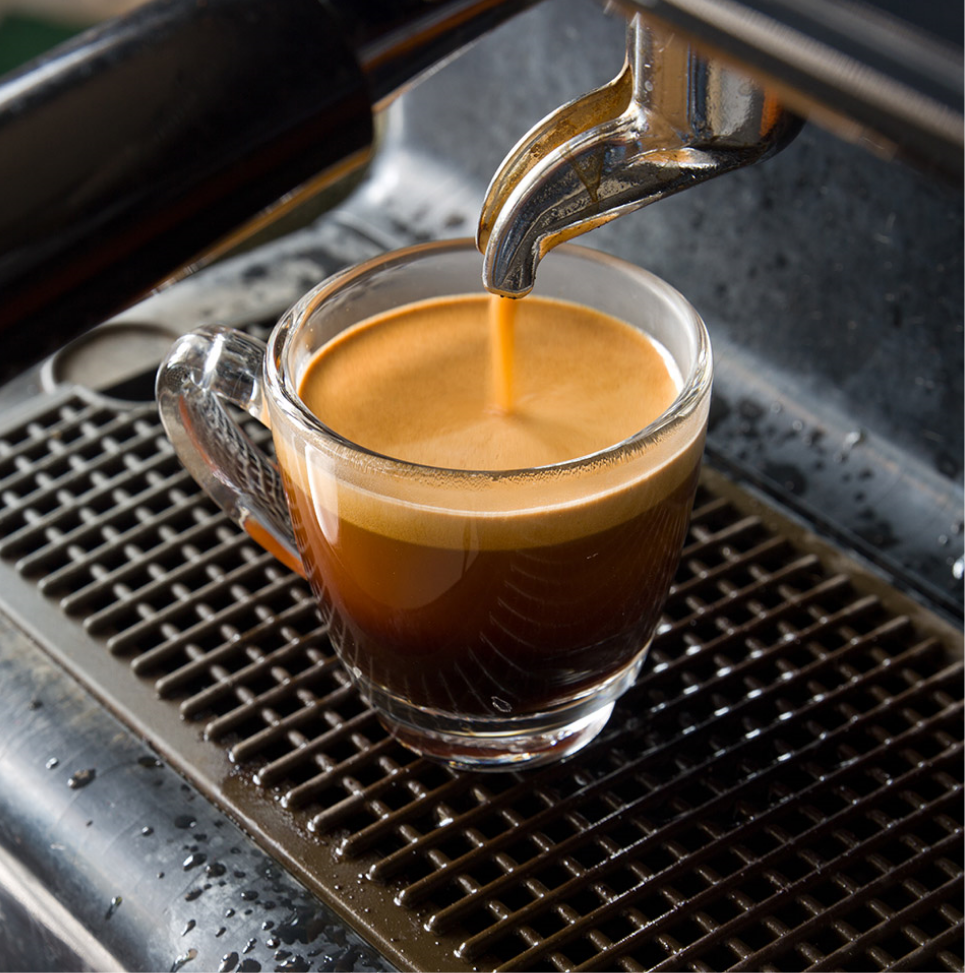

Coffee suggestions
French press - Filter Coffee
EASY TO PREPARE, AMAZING TASTE

A cylindrical container with a piston and a filter which pushes the warm water through the grounded coffee. This is the simple beauty of filter coffee, a method of choice by many around the globe, creating an earthy, rich taste in your cup everyday.
The secret lies in our way of grinding the coffee: choose a medium ground which allows consistency. A coarse grounded coffee can clog the filter, while a too fine grounded coffee will go through the filter, giving you a “muddy” result.
Preparation process:
Place the container on a dry, flat surface. Hold the handle firmly and pull out the plunger. Add a table-spoon (7 – 8 g) of coffee in the container per 200ml of water. Pour hot water – not quite boiling – in the container and stir slowly. Place the plunger carefully, stopping right on top of the water and ground coffee (don’t plunge yet) and let stand for 3-4 minutes. Then press the plunger slowly, exercising steady pressure.
After every use, clean the container with water and detergent, and dry thoroughly.
Espresso
ITS NAME SAYS EVERYTHING

An espresso must be prepared and enjoyed immediately. For every coffee lover, the espresso is the quintessence of coffee making – rich and aromatic with a velvety texture. A rich cream on top, hints towards a full body and a balanced result.
When prepared perfectly, a small miracle of chemistry and physics, glide together through the air. The authentic espresso formula is clear and important. The right execution is a matter of training, experience, and talent. A hot water jet of 88° C – 93° C, with over nine atmospheres goes through a layer of 8g +/- ground coffee.
THE ART OF ESPRESSO
Its authentic preparation begins with freshly grounded coffee beans, perfected for this method. The art of the barista is to decide on the grind, gather the right amount of coffee in grams on the filter and then monitor time, temperature, and pressure. Even contemporary, automated coffee machines demand close monitoring throughout the process.
The perfection lies in the balance.
Cappuccino
The ultimate combination of espresso and creamy, steamed milk!

How to make a Cappuccino
Myth: The silky-smooth texture of a cappuccino is impossible to grasp at home. It requires delicate handling so it is better enjoyed in the café.
Truth: Cappuccino is a beverage able to satisfy even the most demanding coffee lovers, right in their own kitchen. It needs some practice with water, steam, and foam along with all the necessary equipment on your counter. You will need an espresso machine equipped with a steam wand. And of course, LUNO coffee for your espresso. A single cappuccino is a beverage of approximately 150 ml, with 25 ml of espresso coffee and 85 ml of fresh milk (for a creamier result opt for a full-fat milk). The steaming of the milk adds volume. The temperature of the beverage must not be over 65° C.
How to make it better:
Pour cold milk in an stainless-steel container (fill approximately one-third or 85 ml for a single cappuccino).
Release the steam from the steam wand for a couple of seconds to get rid of any remaining water and then dip the end of the wand in the milk and try to create a swirl while adding “air” and volume into your milk. While the foam increases along with the volume, lower the container, while still creating that swirling effect. Don’t move the container around, let the swirl do its job. Keep steaming the milk until it reaches 65 degrees (check with a kitchen thermometer) and its volume has doubled. Gently tap the container on the counter to remove any bubbles. Prepare an espresso in a cappuccino cup (preferably a cone shaped one), pour the steamed milk right inside the cup aiming for the centre and then in a circular motion. Turn on and off the steam wand again to get rid of any excess milk remains.
THE BEST FROTHED MILK
The consistency of the foam depends on the milk’s fat content. For a more velvety and creamier, rich cappuccino, use whole milk. You can replace milk with low-fat milk, sacrificing the thick cream. The foam produced by low-fat milk is light more silky-smooth and creamier meringue-like and dissolves quickly.
